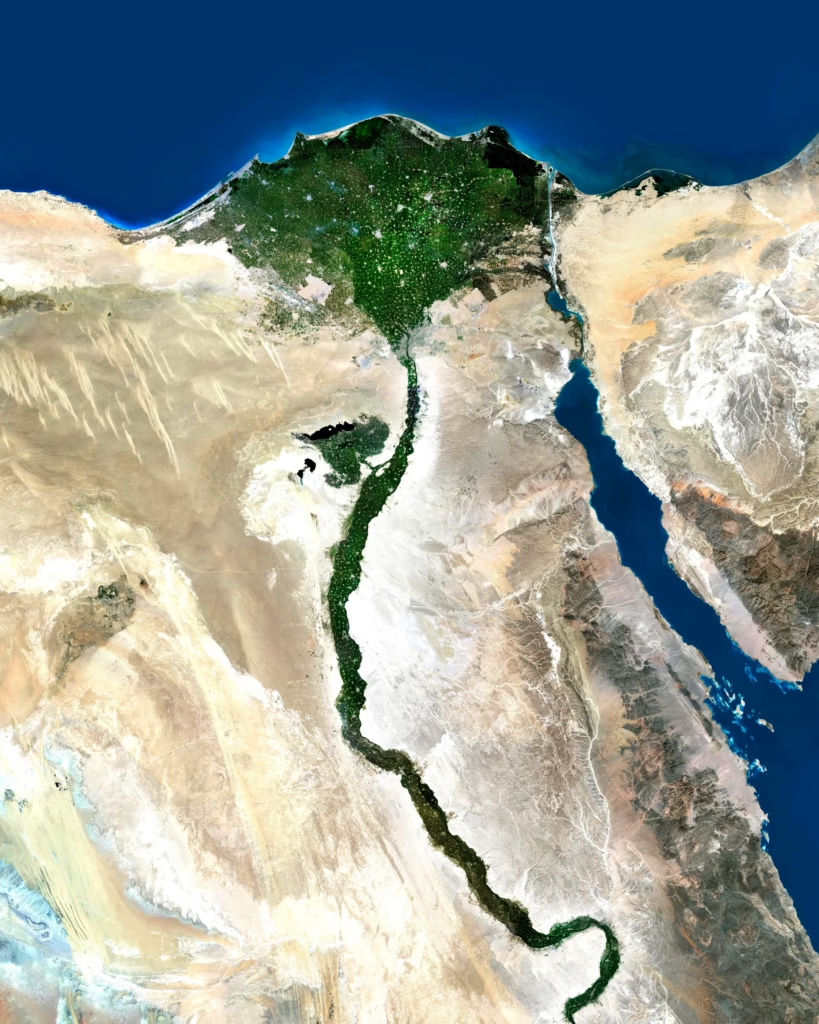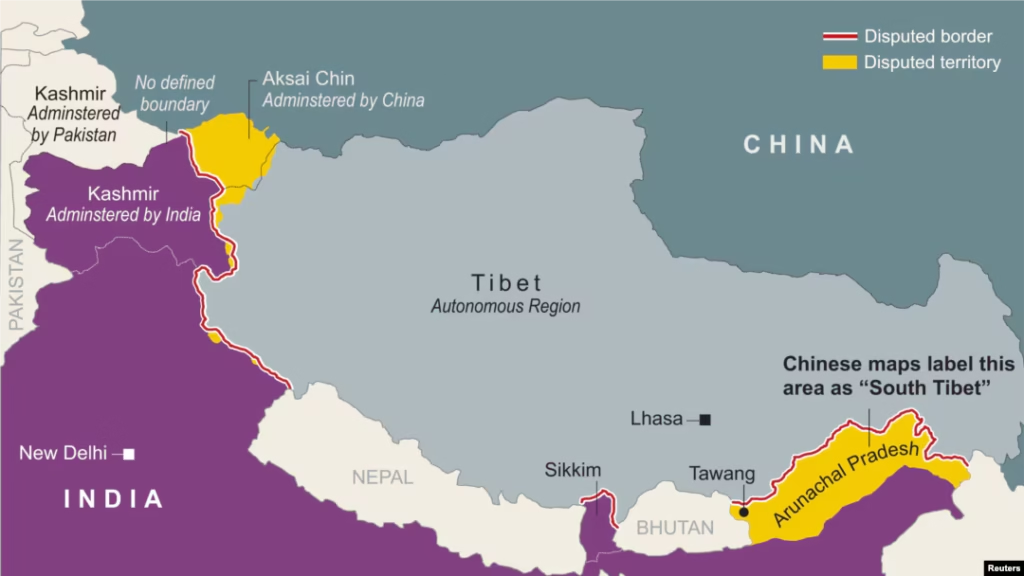China vs. India: New Flashpoint About to Burst – Water Wars Are Coming
(Feat. Africa Nile River Crisis over Egypt, Ethiopia, Sudan & Southeast Asia Mekong & Yarlung Tsangpo Brahmaputra over India, Tibet, China, Dam Electricity Energy)
Water is life—but it’s also becoming one of the most dangerous weapons of the 21st century. As tensions between China and India heat up over critical rivers and mega-dams, the stakes couldn’t be higher. These water disputes aren’t just about resources; they’re about power, survival, and control over millions of lives downstream. Could this be the next big crisis to erupt? Dive in to uncover how this escalating conflict might not just reshape Asia, but ripple across the globe.

1. The Italian composer Verdi’s opera Aida was inspired by the long-standing water disputes between Egypt and Ethiopia.

2. Aida tells the story of a princess from an upstream Nile country who becomes a prisoner after an Egyptian military invasion and falls into a tragic love story.
3. Egypt, an agricultural nation, has always relied 100% on the Nile River for its survival.

4. Historically, Egypt has feared that upstream nations like Sudan and Ethiopia might control the Nile’s flow.
5. If upstream water supply decreases, Egypt faces drought; if there’s flooding upstream, Egypt suffers from devastating floods.


6. The Nile River is divided into two major tributaries: the Blue Nile and the White Nile.
7. The White Nile begins in Burundi’s mountains, flowing through Sudan, Rwanda, and Tanzania.
8. The Blue Nile starts in Ethiopia’s highlands, meets the White Nile in Sudan, then flows through the Sahara Desert into Egypt before reaching the Mediterranean Sea.

9. The Blue Nile, which originates in Ethiopia, supplies 80% of the Nile’s total water flow.
10. Ethiopia built the Grand Ethiopian Renaissance Dam (GERD) on the Blue Nile.
11. If the dam collapses or its floodgates are opened intentionally, Egypt and Sudan could face catastrophic flooding.
12. On the other hand, if Ethiopia withholds water by filling the dam, downstream water supply will shrink, causing severe droughts in Egypt and Sudan.
13. Ethiopia claims it will store water only during the rainy season, but Egypt fears the dam could be used as a political tool.
14. Egypt’s concerns are not baseless.
15. The first dam on the Nile was the Aswan Dam in Egypt, completed in 1902.
16. The Aswan Dam was built to prevent flood damage caused by the Nile’s overflow.
17. In 1958, Egypt built another structure: the Aswan High Dam.
18. Together, these two dams converted 3,000 square miles of desert into farmland, doubling Egypt’s agricultural production.


20. However, the construction of the Aswan High Dam created flood zones in Sudan, displacing 90,000 Sudanese people.
21. Egypt compensated Sudan by agreeing to provide more water through the Aswan Dam.
22. While the Egypt-Sudan agreement went smoothly, neighboring countries were not as satisfied.
23. They believed Egypt and Sudan were politically monopolizing the Nile’s water resources.
24. Ethiopia and other Nile basin countries began to resist this perceived monopoly.
25. Ethiopia announced its own plans to build a dam.
26. Starting in 2011, Ethiopia began constructing the Grand Ethiopian Renaissance Dam (GERD) at a cost of $4.2 billion.

27. In February 2022, the GERD was completed and began generating electricity.
28. Ethiopia, which faces chronic energy shortages, now generates 5,000 MW of electricity from the dam, covering two-thirds of its energy needs.
29. The Renaissance Dam’s reservoir spans 800 square miles—roughly the size of New York City—and surpasses the Aswan High Dam in scale.
30. Despite being operational, the dam’s enormous size means it will take until 2028 to fully fill its reservoir.
31. Egypt has strongly opposed Ethiopia’s actions.
32. Egypt currently sources 97% of its drinking, agricultural, and industrial water from the Nile.
33. Egypt fears it may face severe water shortages until 2028 while Ethiopia fills the dam, seeing this as a national security threat.
34. In response, Egypt and Sudan launched joint military operations, called the “Guardians of the Nile,” to pressure Ethiopia.
35. The risk of conflict over water resources in Africa is growing.
36. Meanwhile, China, Vietnam, and India are also disputing control over key rivers like the Mekong and Yarlung Tsangpo.
37. The Mekong River, stretching 4,020 km, originates in Tibet and flows through Myanmar, Laos, Thailand, Cambodia, and Vietnam.
38. Cambodia and Vietnam heavily depend on the Mekong for drinking water, agriculture, and industry, making it critical for downstream farming.
39. Since the 1990s, China has built 11 dams along the upper Mekong River and plans to construct 18 more.


40. China is severe water scarcity country.
41. Its per capita water resources are just one-quarter of the global average, and rapid industrialization has depleted resources even further.
42. Adding to the problem, China lacks sufficient water recycling facilities, leading to significant wastage.
43. This water shortage even prevents China from fully exploiting its vast inland shale oil reserves.
44. To address its water crisis, China has aggressively built dams on major rivers, even when these rivers flow into neighboring countries.
45. So, The Mekong River supports 70 million people along its course through Southeast Asia.
46. Frequent droughts in Indochina over the past decade have been blamed on China’s excessive dam-building activities.
47. China’s goals go beyond hydropower; it seeks to store massive amounts of water for long-term use.
48. By filling reservoirs, China hopes to raise groundwater levels in its arid western regions.
49. This strategy reflects China’s characteristic long-term planning, which could span 150 years.
50. However, such unilateral actions threaten millions of people downstream.
51. China is not just focused on the Mekong River; it is also attempting to redirect the flow of water originating in the Tibetan Plateau—water that naturally flows into Southeast Asia—toward its own territory.

52. China and India are currently engaged in an ongoing border dispute.

54. To prevent escalation, both sides agreed not to use firearms or heavy weaponry, resulting in hand-to-hand combat during confrontations.
55. China has even deployed soldiers trained in martial arts, equipped with unconventional weapons such as spiked clubs and steel pipes.
56. In one incident, Chinese soldiers used these weapons to kill 20 Indian soldiers during a skirmish.
57. Amid these tensions, a new ticking time bomb is emerging.
58. The Yarlung Tsangpo River originates in the Himalayas and flows through Tibet, where it becomes the Brahmaputra River as it enters India and Bangladesh before emptying into the Bay of Bengal.

59. As shown on the map, the river’s waters are a vital resource for both India and Bangladesh.
60. Shortly after China and India’s deadly border clash, China announced plans to construct hydroelectric dams along the Yarlung Tsangpo River.

61. China has revealed plans to build five massive hydropower dams on the river, with a total generation capacity of 300 billion kWh annually.
62. To put this in perspective, the capacity of the Three Gorges Dam—currently the largest dam in the world—is only 88.2 billion kWh.
63. Although one might expect the dams along the Yarlung Tsangpo to be physically larger, their immense power generation is due to the river’s geography.
64. Hydropower relies on the energy created by vertical drops in water flow, and the Yarlung Tsangpo River has a massive 2,000-meter drop within a 50-kilometer stretch.
65. This drop makes it one of the most powerful hydropower resources in the world.
66. Combined with the river’s abundant water supply, this geographical advantage allows the generation of enormous amounts of electricity.
67. China boasts that once the dams are complete, they will produce enough electricity to power 300 million people.
68. However, the challenging terrain significantly increases construction costs.
69. The total estimated cost for the project is over 1 trillion yuan (approximately $203 billion), about five times the cost of the Three Gorges Dam.

70. In its 14th Five-Year Plan (2021–2025), China included preparations for the Yarlung Tsangpo project, which has already received official approval.
71. Construction is expected to begin soon.
72. While China frames the project as a win-win opportunity for cooperation, India perceives it as a new strategic threat.
73. China plans to prioritize the construction of the Zangmu Dam and export electricity generated there to countries like Myanmar, Thailand, and Bangladesh.
74. Profits from electricity exports will fund the construction of four additional dams, with power being supplied to China’s Guangdong Province and other regions.
75. If China successfully redirects these water resources, it will increase the risk of severe water shortages in Southeast Asia, giving China significant leverage over neighboring countries.
76. As tensions rise, the U.S. has sought to counterbalance China’s influence by supporting Southeast Asian nations through initiatives like the Lower Mekong Initiative (LMI).

Alphazen insights

Water isn’t just a resource—it’s becoming the world’s most valuable bargaining chip. From Ethiopia’s Nile gamble to China’s relentless dam-building spree on the Mekong and Yarlung Tsangpo, the stakes couldn’t be higher. Nations like India and Southeast Asia are left holding their breath (and buckets) as China flexes its hydropower ambitions.
Here’s the twist: as China reroutes rivers and ruffles neighbors, the U.S. could step in to support allies and counterbalance Beijing’s control. Who knew water could be the new oil—and possibly the next reason for global tension? Stay hydrated, folks—it’s about to get choppy.
Discover more from Alphazen Dynamics
Subscribe to get the latest posts sent to your email.




